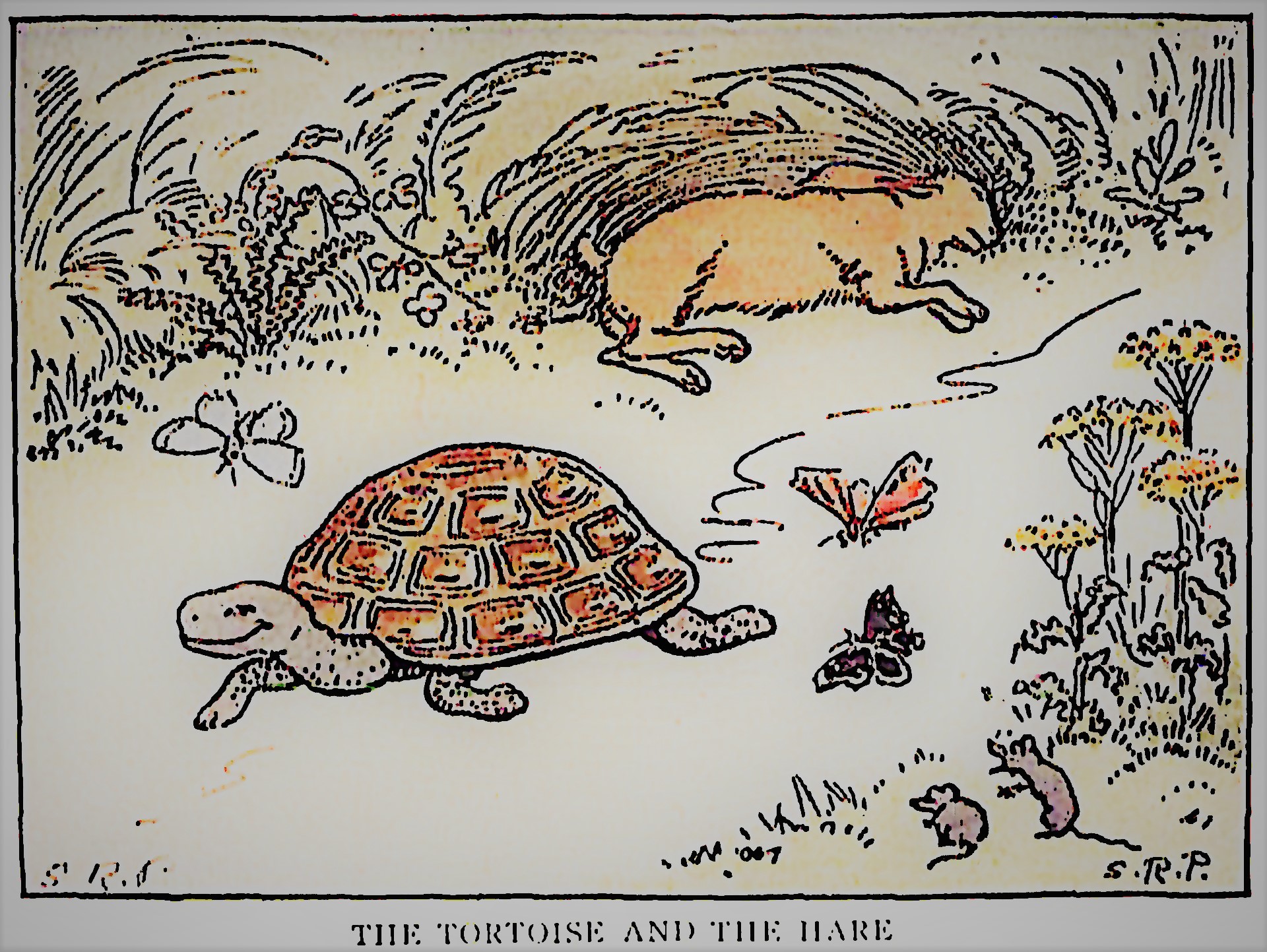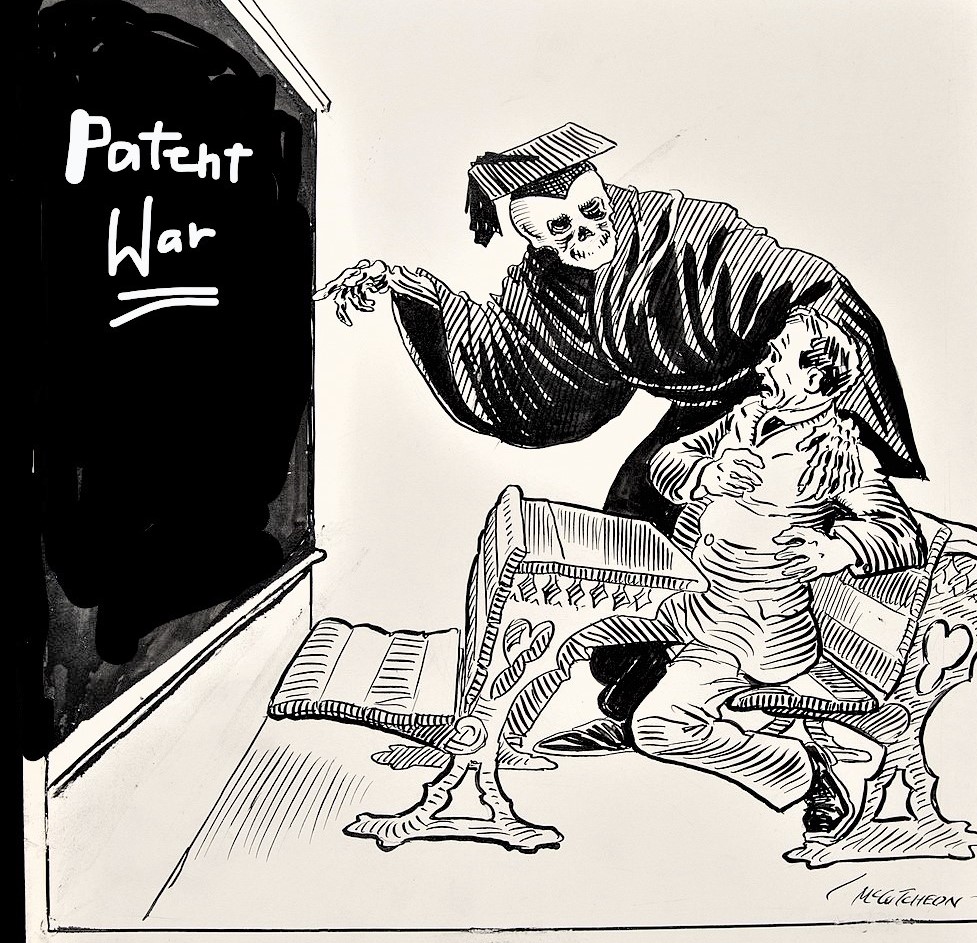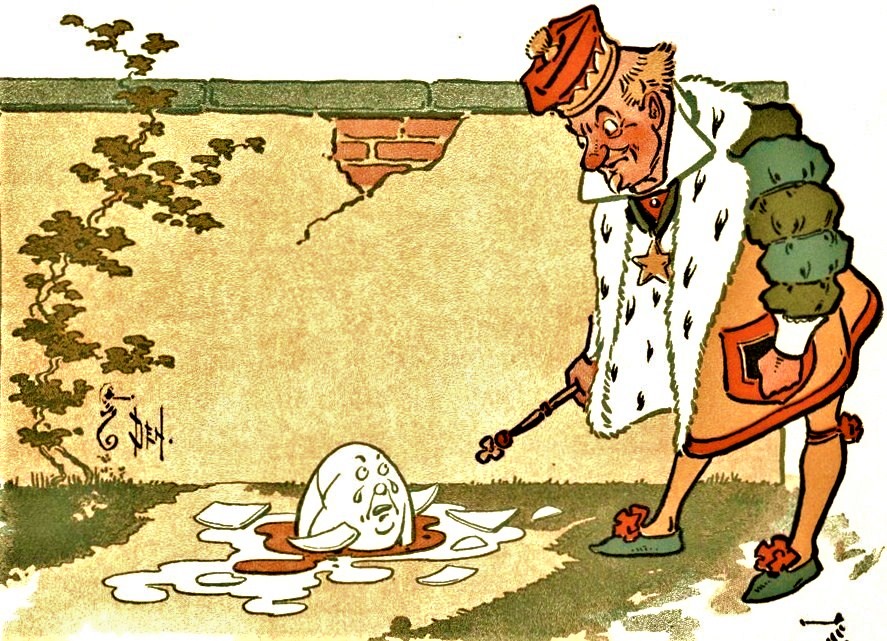Metaphors matter. Is technology a race, or a war with an associated D-day? References to “the race to 5G” and “innovation wars” are based on a zero-sum model of technological innovation, where there are glorious outcomes for “winners” and dire consequences for “losers.” According to this ahistorical perspective, the leader takes all, and for the rest of the field, life promises to be poor, nasty, brutish, and short. In order to avoid this doomsday scenario, even previously unacceptable measures become warranted to ensure literally vital “national security.”
Such extremist rhetoric has devolved to discussions about patents and national security. For instance, the Report of the Commission on the Theft of American Intellectual Property labelled infringement “one of the most pressing issues of economic and national security facing our country.” Bizarrely, the recommendations include getting the FBI involved in prosecuting trade secrecy violations, and clarion calls to “designate the national security adviser as the principal policy coordinator on the protection of American IP.” Apparently, we can win the “race” by declaring “war.”

A History of Patents and National Security
What does history reveal about the links between patents and national security? In England, patents were granted by favour of the Crown, and could be expropriated whenever this was viewed as expedient, both during war and times of peace.
My book, The Democratization of Invention, demonstrated that American industrial leadership was in part due to its new approach to patents, which secured the absolute right to property in ideas to the first and true inventor. During the 19th century the U.S. was renowned for this PATENT PRIMACY MODEL, in which patent security was viewed as necessary for economic and social progress.
The Civil War, which was the first technological war, raised questions about whether victory and national security could be ensured by overturning patents. However, as my new book, Inventing Ideas, shows, policies to ensure strong patent rights played a central role on both sides of the conflict. After secession from the Union, Jefferson Davis immediately advised the Confederate States to draw up new legislation, “especially on the subject of patent rights.” In the midst of this devastating conflict, Abraham Lincoln, himself a patentee and patent lawyer, frequently engaged with inventors in person and through correspondence. In the Civil War era, proposals to infringe on patent rights in the interests of the war effort were roundly rejected. If the government wished to use patented military inventions, they entered the market just like any other interested party.
The relationship between patents and national security became more complicated in the 20th century. During the first and second World Wars, patent rights were weakened in the service of the war effort. Initially, national security was related to military strength during times of war but, as the Cold War heated up, those liabilities were extended into peacetime, and to issues beyond the military.
According to this new TRADE-OFF MODEL, national security is an ongoing existential crisis that sometimes demands the sacrifice of previously sacrosanct norms, including intellectual property and other constitutional rights.
Invention Secrecy and other Liability Rules
One of the perceived trade-offs relates to access to ideas. Patents are designed to encourage the creation, exchange, and dissemination of new ideas; whereas a primary objective of “national security” is to limit access to knowledge and ideas.
The first invention secrecy act of 1917 related narrowly to military inventions in times of war. This policy was later extended to private inventors during peace time, and to dual-use technologies such as durable paint for ships. Currently, under the Invention Secrecy Act, 35 U.S.C. §181-88 (2017), about 6000 secrecy orders are in effect, covering patented inventions whose disclosure would, according to the government, harm national security. Studies of invention secrecy policies have found, as might be expected, that they reduce follow-on discoveries and commercialization.
During WWI, the 1917 Trading with the Enemy Act resulted in compulsory licenses for enemy-owned patents, while government agencies and contractors could not be sued for infringement of domestic patents. In WWII, the Royalty Adjustment Act limited royalties payable to private patentees, and injunctions could not be granted against government contractors.
Many related restrictions on the rights of patentees persisted beyond the war. The Atomic Energy Act of 1946 denied patents for nuclear and atomic energy inventions, and even previously granted patents could be overturned. The National Aeronautics and Space Act of 1958 allowed NASA to seize patents resulting from government-financed research. In 1963, government contractors were granted the same liability rights regarding patents as the government itself.
National Security: A Grimm Tale for the 21st Century
 At present, national security has become a Humpty Dumpty concept. The term covers not just military concerns, but also economic leadership, trade and industrial policy, and technological competition. Security concerns have morphed well beyond the military, incorporating patented technologies in AI and robotics, 5G telecoms and the internet of things, cyberspace and biotech. Intellectual property theft (whatever that means), industrial espionage, computer hacking, mergers and acquisitions, and even the enrollment of foreign students, are all included in discussions of national security policy. And, of course, practically any dealings with China seem to qualify as an existential threat.
At present, national security has become a Humpty Dumpty concept. The term covers not just military concerns, but also economic leadership, trade and industrial policy, and technological competition. Security concerns have morphed well beyond the military, incorporating patented technologies in AI and robotics, 5G telecoms and the internet of things, cyberspace and biotech. Intellectual property theft (whatever that means), industrial espionage, computer hacking, mergers and acquisitions, and even the enrollment of foreign students, are all included in discussions of national security policy. And, of course, practically any dealings with China seem to qualify as an existential threat.
In the time of Covid, Homeland Security takes a keen interest in health-related innovations. Americans have suggested that the National Security Exception in the TRIPS Agreement covers Covid-related patents. Remarkably, we are now witnessing the bizarre spectacle of an American president calling for the overturn of Covid vaccine patents in the interest of national security.
According to this sort of IP McCarthyism, even standard patent licensing and the exercise of an innovator’s competitive advantage can be viewed as suspect. Witness such unfounded claims as: “patent rights, and in particular unbridled assertion of patents, can impair and repeatedly has impaired national security interests.”
Be Careful What You Wish For
Today the link between national security and intellectual property rights has become a double-edged sword. Samuel Johnson proclaimed that “patriotism is the last refuge of the scoundrel,” and these sentiments also relate to self-interested appeals to strengthen/weaken property rights in the name of national security. Any specific patent holder might benefit at one point from a rival’s downfall, but their own head could just as well roll at another date. In short, the arbitrary monarchist perspectives of 18th century Europe have re-emerged in linkages between U.S. patent and national security policies of the 21st century.
